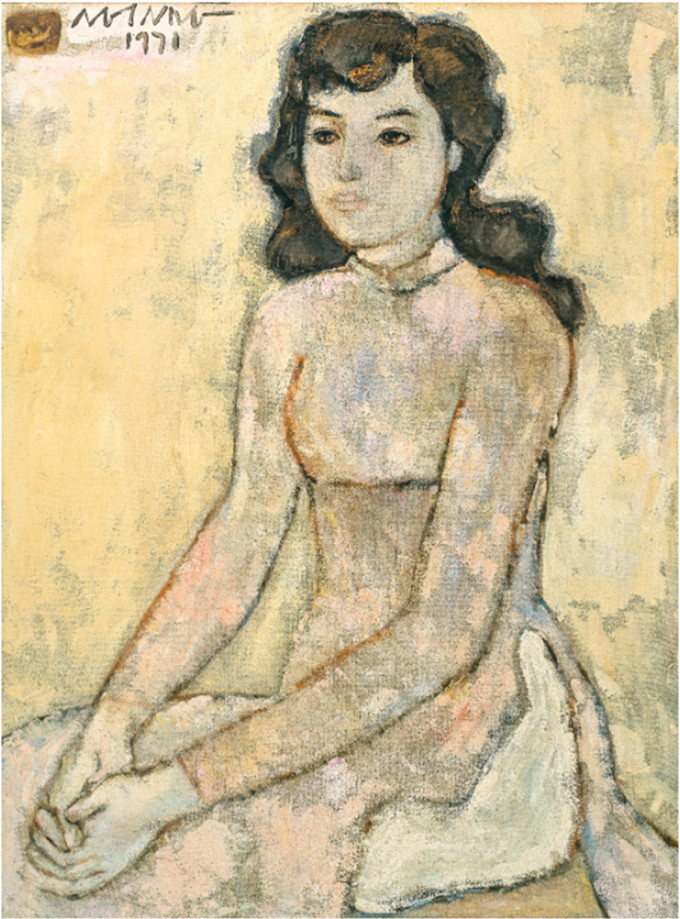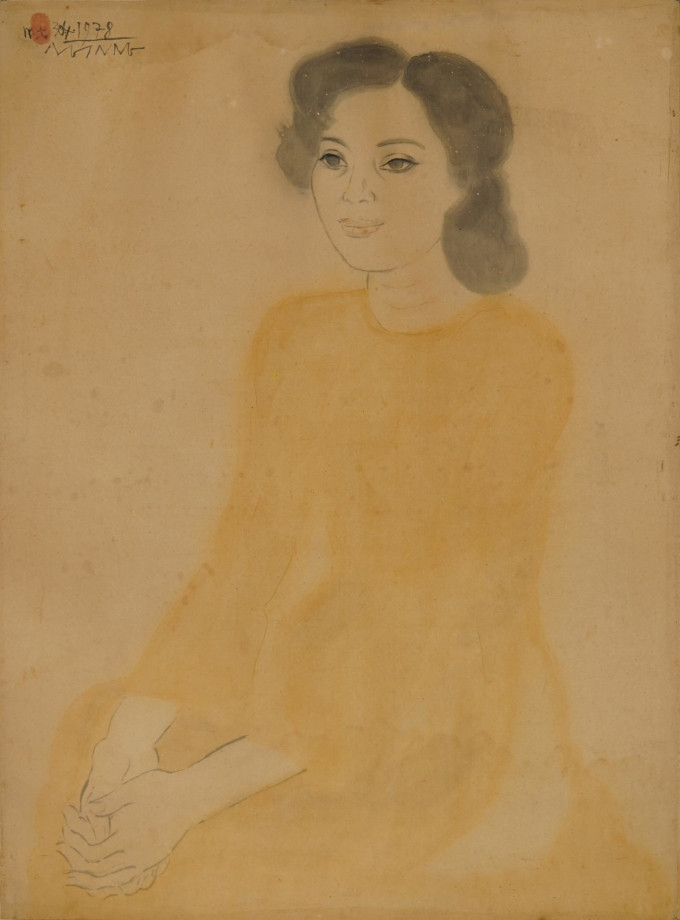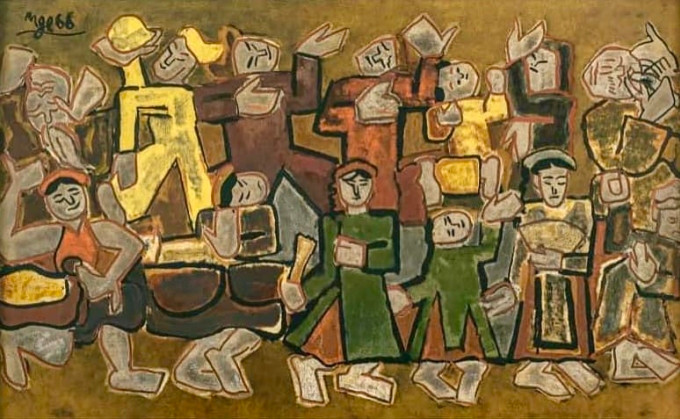Experts say it is difficult to prevent fake Vietnamese paintings from being put up for auction, and say buyers should research carefully before paying.

At Christie's Hong Kong auction in late May, the workPortrait of a Girl(Portrait of a Girl) by Nguyen Sang was hammered for 176,400 HKD (574 million VND). Also at the event, the paintingAncient Dance(Ancient Dance) by Nguyen Tu Nghiem fetched a price of over one million HKD (about 3.2 billion VND). However, the authenticity of the two products is doubted by experts.
Specifically in oil paintingPortrait of a Girl,Collector Ly Doi said the painting was copied from a silk work by Nguyen Sang, depicting a portrait of Ms. Ngoc Ha, wife of Mr. Nguyen Kim Son. In addition to the different strokes, information on the auction house's website states the creation date as 1971, while the original painting was completed on April 30, 1978.

In the workAncient Dance, Mr. Ly Doi noticed that the lacquer technique on the painting is somewhat different from Nguyen Tu Nghiem's style. In addition, the famous painter is a character in the legendary quartet of Vietnamese painters along with Bui Xuan Phai, Nguyen Sang, and Duong Bich Lien. ''The price of the painting may be higher because of its rarity as well as his reputation,'' Mr. Ly Doi said.
Art researcher Ngo Kim Khoi said that art buyers often follow the market closely and it is unclear why they would spend money on two works with conflicting opinions about their origins. Christie's said it has received the information and will respond in the near future.
Cases of Vietnamese paintings suspected of not being originals have appeared on the international market for many years. In 2019, Sotheby's Hong Kong offered for sale works by a series of famous Vietnamese artists such as To Ngoc Van and Tran Van Can, causing a stir among connoisseurs. However, domestic artists quickly protested, claiming that these were copies, forcing the auction house to withdraw the painting. At the end of 2021, this unit also had to remove the painting.L'image traditionnelle d'une maison de paysan(Image of a traditional thatched house) named after the famous painter Nguyen Van Ty for the same reason.
The domestic market is not immune to this situation. In 2016, 15 out of 17 paintings at the exhibitionPaintings from Europebelong toMr. Vu Xuan Chung in Ho Chi Minh City was concluded to be fake. In the remaining two paintings, the one named Ta Ty was actually painted by Thanh Chuong around 1970-1971, making the artist angry.
Experts say that fake Vietnamese paintings appear frequently due to the lack of a team to check the authenticity of the works and weak domestic sanctions. Mr. Le Quang - representative of Le Auction House - said that currently the art market has more fake goods than genuine ones. According to Mr. Quang, there has been a long history of copying paintings of famous artists, making it difficult to determine the origin of the paintings.

Artist Vu Dinh Tuan once said that fake paintings developed more after 1986, when the country was in the Doi Moi period. At this time, art became an increasingly valuable commodity. According to art researcher Pham Long, when Le Pho became the first Vietnamese artist to earn a million dollars, fake paintings on the market increased. Most of them were Indochinese works due to their high prices, most of the famous artists were lost and there were not many documents to prove it.
According to lawyer Duong Anh Nga - from the Ho Chi Minh City Bar Association, Vietnam has sanctions depending on the level of violation for the act of copying fake paintings, however, there is a lack of specialized agencies to assess the authenticity of the paintings. Currently, appraisal units often check many products, not specializing in paintings. Therefore, they can only determine the percentage of copying, but cannot confirm that the product is fake.
A representative of Le Auction House said that not all units have a team of curators who can appraise all the paintings by the famous Indochina artist. Many experts do not know the language or lack understanding of Vietnamese culture, leading to errors in evaluation. Sometimes, they are deceived by the person who submitted the paintings.
Mr. Ly Doi said that a large auction house would not be willing to sacrifice its reputation for a fake work, even if the price was not too high. They would be willing to remove the painting if Vietnam had sufficient evidence and strict sanctions for violations. ''However, this is something that our country still lacks,'' he said. He even wondered what kind of punishment would be imposed on a buyer who is a Vietnamese citizen and brings a product identified as fake back to the country.
When it is impossible to prevent fake Vietnamese paintings from appearing everywhere both domestically and internationally, buyers need to become wise individuals. Having spent many years collecting paintings, Le Quang advises auctioneers to carefully research the paintings they intend to buy. He believes that each person must protect themselves by equipping themselves with sufficient expertise and alertness to avoid losing money unjustly. Art researcher Ngo Kim Khoi also emphasized that collectors must always improve their knowledge and seek advice from experts.